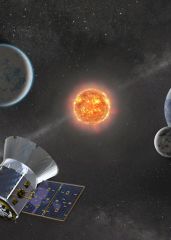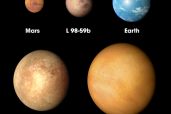NASA has announced that its Transiting Exoplanet Survey Satellite (TESS) has discovered a planet somewhere between the sizes of Mars and Earth. The planet is called L 98-59b and is the smallest planet discovered by TESS thus far.
SETI Institute research scientist Veselin Kostov, also with NASA’s Goddard Space Flight Center in Greenbelt, Maryland, is the lead author on a paper announcing the discovery in The Astronomical Journal. “The discovery is a great engineering and scientific accomplishment for TESS,” said Kostov. “For atmospheric studies of small planets, you need short orbits around bright stars, but such planets are difficult to detect. This system has the potential for fascinating future studies.”
Two additional planets were discovered in the same system, both larger than Earth. TESS detects exoplanets using the transit method; that is, measuring the decrease in a star’s brightness when a planet passes in front of it.
None of the newly discovered planets are in their star’s so-called Goldilocks or habitable zone.
- You can read NASA’s press release here
- The paper in The Astronomical Journal is available here
- Additional resources: https://svs.gsfc.nasa.gov/13223







